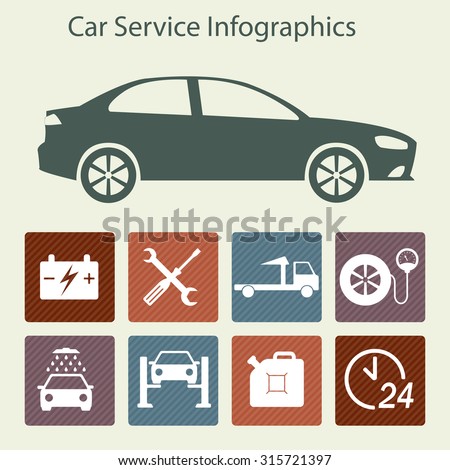Checking Out Brake Solutions: Typical Issues And Practical Solutions For Fixing
Checking Out Brake Solutions: Typical Issues And Practical Solutions For Fixing
Blog Article
Article Created By-Prater Bjerring
When it involves your automobile's brake system, comprehending common concerns can conserve you from potential safety risks. From identifying brake pad wear to dealing with brake liquid leakages, knowing exactly how to deal with these troubles is crucial. However what concerning those mushy brake pedals? There's a solution for that as well. Keep tuned for https://www.autoserviceworld.com/heres-how-to-improve-customer-relations/ about these problems and the functional solutions that can keep you securely on the road.
Brake Pad Wear and Substitute
When it pertains to keeping your vehicle's brake system, one vital facet to keep an eye on is the wear and replacement of brake pads. Brake pads are essential parts that press versus the brake blades to slow down or stop your automobile. Over time, these pads wear down as a result of friction, requiring normal assessment and replacement to guarantee your brakes operate properly.
To determine if your brake pads require replacement, listen for shrilling or grinding sounds when you use the brakes. Additionally, if your lorry takes longer to quit or you observe vibrations or pulsations when braking, it might be time to change the brake pads.
Overlooking worn brake pads can lead to decreased braking efficiency, damage to various other brake parts, or even brake failing.
Replacing brake pads is a relatively straightforward process for numerous lorries. Nonetheless, if you're uncertain or uncomfortable performing this job, it's finest to get in touch with an expert auto mechanic to make sure appropriate installment and optimum brake performance.
Frequently inspecting and changing brake pads is vital for your safety and security and the long life of your car's stopping system.
Brake Liquid Leaks and Upkeep
To ensure your vehicle's brake system works optimally, it is necessary to also pay attention to brake fluid leakages and upkeep. Brake fluid is essential for transferring the force from your foot on the brake pedal to the real braking mechanism. One usual problem with brake liquid is leakages, which can take place as a result of deteriorated brake lines, seals, or connections. If you notice a puddle or trickles under your auto, it's vital to attend to the leakage immediately to prevent a potential brake failure.
https://holdentoicx.blogoxo.com/31326665/discover-in-this-short-article-exactly-how-you-can-enhance-sustainability-and-decrease-environmental-impact-in-your-vehicle-service-center-by-carrying-out-eco-friendly-strategies inspecting your brake liquid degree is vital to maintaining your brake system. Reduced brake fluid can cause air getting in the brake lines, which jeopardizes stopping efficiency.
Furthermore, old or polluted brake fluid can influence the total performance of your brakes. It's suggested to follow the manufacturer's guidelines on when to change the brake fluid, usually every 2 years.
Spongy Brake Pedal: Bleeding Brakes
If you have actually ever before experienced a squishy brake pedal while driving, you comprehend the significance of keeping a firm and receptive stopping system. One common reason for a mushy brake pedal is air caught in the brake lines. When air goes into the brake system, it can bring about a loss of hydraulic pressure, causing that distressing mushy feeling when you press the brake pedal.
To fix this issue, hemorrhaging the brakes is essential. Hemorrhaging the brakes entails getting rid of the air from the brake lines to recover appropriate hydraulic stress.
To hemorrhage the brakes, you'll require a helper to help you. Begin by locating the brake bleeder valve on each wheel, typically found near the brake caliper. With https://milokgaup.thenerdsblog.com/36855762/subjecting-the-treasures-unearthing-superior-car-repair-shops-in-your-surrounding-location , loosen up the valve and have your assistant press the brake pedal while you observe any air bubbles appearing. Repeat this process for each and every wheel, beginning with the wheel farthest from the master cyndrical tube and relocating more detailed.
When you no more see air bubbles and only clear fluid arises, tighten up the valve and top up the brake liquid storage tank as required. Bleeding the brakes assists guarantee a firm brake pedal and enhances total stopping performance.
Final thought
Since you comprehend usual brake problems and how to fix them, you can ensure your car's safety and security and performance. Remember to pay attention for indication like shrilling sounds or mushy brake pedals, and resolve them quickly. Routine maintenance and prompt replacements are key to keeping your brakes in leading problem. Keep proactive and alert to your brake system to delight in safe and reputable driving experiences.
